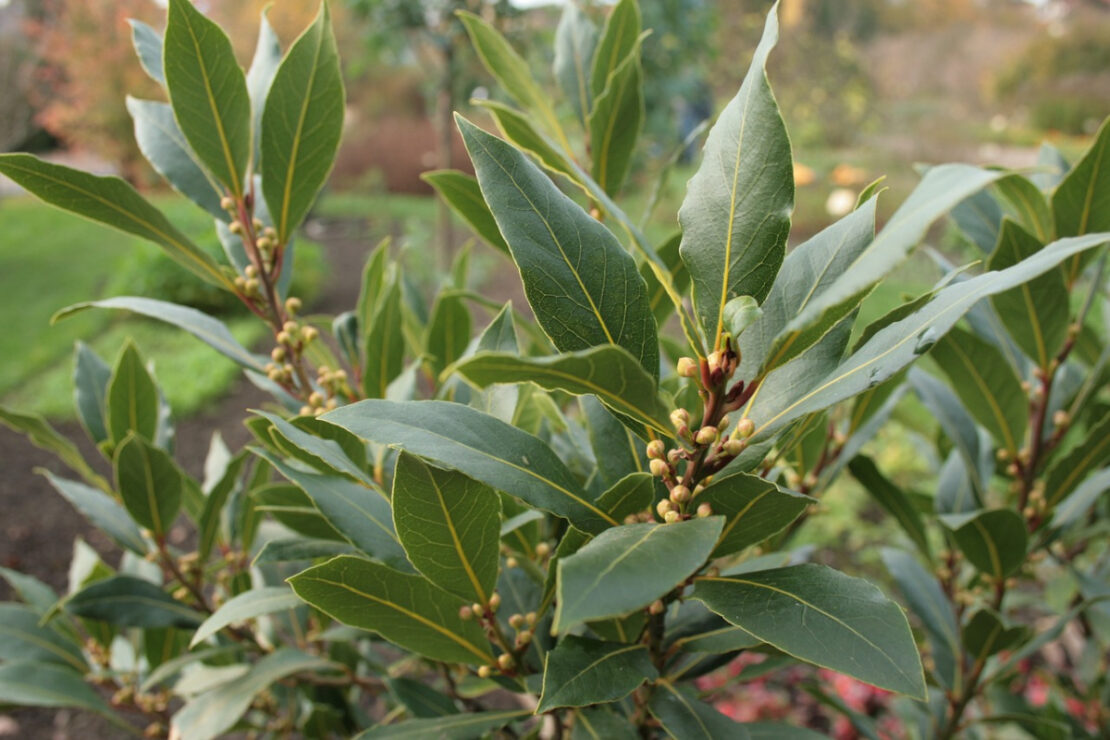
Herbs of Apollo: Greek God of Healing, Prophecy, and the Sun
Who Was Apollo?
Apollo was the ancient Greek god with a multitude of powerful associations, including the sun, music, poetry, healing, oracles, prophecy, plagues, and archery. As the son of Zeus, king of the gods, and Leto, the goddess of motherhood, Apollo was one of the twelve Olympian gods who was both revered and feared by the ancient Greeks. Apollo’s divine powers also extended into the plant world. Of interest to herbalists, there are several well-known myths that depict his associations with sacred plants. Exploring Apollo’s fascinating role in the ancient Greek world can help us better understand both him and the plants sacred to the ancient Greeks. Let’s first examine ancient sources that tell us more about this powerful Greek god, starting with his divine history.
According to the Homeric Hymns, Apollo was born on the Greek island of Delos alongside his twin sister Artemis, the goddess of the hunt, the wilderness, and the moon. His mother, Leto, was in labor for 9 days and finally gave birth to Apollo under a palm tree (or an olive tree, according to some sources) at the base of Mount Cynthus (Smith, 1849). According to several ancient texts, Apollo was born after only 7 months and on the seventh day of the month, thereafter marking the number sacred to him. The ancient Greeks would make sacrifices to Apollo or hold festivals in his honor on the seventh day of every month (Plutarch, 1874). Upon his birth, Apollo fed on ambrosia and nectar, the primary foods of the gods, which sparked his immediate desire for both the lyre, a stringed musical instrument, and the bow (Hesiod, 1914). Later in his life, Apollo would have a son with Coronis, a mortal woman. When she died during childbirth, Apollo saved the infant and took him to Chiron the centaur, the half-horse, half-human creature who would teach the child, named Asclepius, the art of medicine. Apollo’s son would become known as the god of medicine throughout the ancient Greek empire.

Ancient images of Apollo often depict him as the perfect ideal of youthful manliness in Greek antiquity, a well-proportioned young man with long hair wearing a wreath and holding either a branch of laurel, a bow and arrows, or the lyre. In Roman antiquity, the god was referred to by the same name, unlike the other mythological gods that took on Roman names. Additionally, the god was sometimes called Phoebus Apollo, referring to the “shining or brilliant one,” in reference to his association with the sun (Smith, 1849, p. 231).
Apollo’s many divine powers seem to contradict themselves. A god of healing but also of plagues? A god with rewards, but also punishments? With his bow and arrows, Apollo could relieve suffering, but also send a plague to the Greeks, as he did during the famed 10-year Trojan War when King Agamemnon spurned one of Apollo’s priests and angered “the god of the silver bow” (Homer, 1.35, 1898). In contrast, Pausanias, a Greek geographer in the 2nd century CE, cites one example of Apollo’s powerful healing touch: “Opposite the temple [the Parthenon on the Akropolis of Athens] is a bronze Apollon, said to be the work of Pheidias. They call it Parnopion (the Locust God), because once when locusts were devastating the land the god said that he would drive them from Attika. That he did drive them away they know, but they do not say how” (1918, 1.24.8). Like the other gods with immeasurable powers, Apollo’s healing touch was beset with mystery and wonder.
Oftentimes, Apollo’s divine powers were attributed to his father, and as a result, he was referred to as “the prophet of his father Zeus” (Aeschylus, 1926, 19). His most divine gift of prophecy was beneficial to both gods and humans, and he was worshipped regularly in rituals alongside other divinities and during festivals at his many sacred sites across the ancient Greek empire, which stretched from Italy to Asia Minor. Despite that he could both strike upon humans to sicken them or deliver oracles for their health and healing, Apollo was considered the most influential god in the Greek pantheon, because “in him the brightest side of the Grecian mind is reflected” (Smith, 1849, p. 232).
As mentioned earlier, Apollo’s divine powers also extended into the plant world. Let’s explore some of the sacred plants of this most celebrated ancient Greek god.
Herbs of Apollo
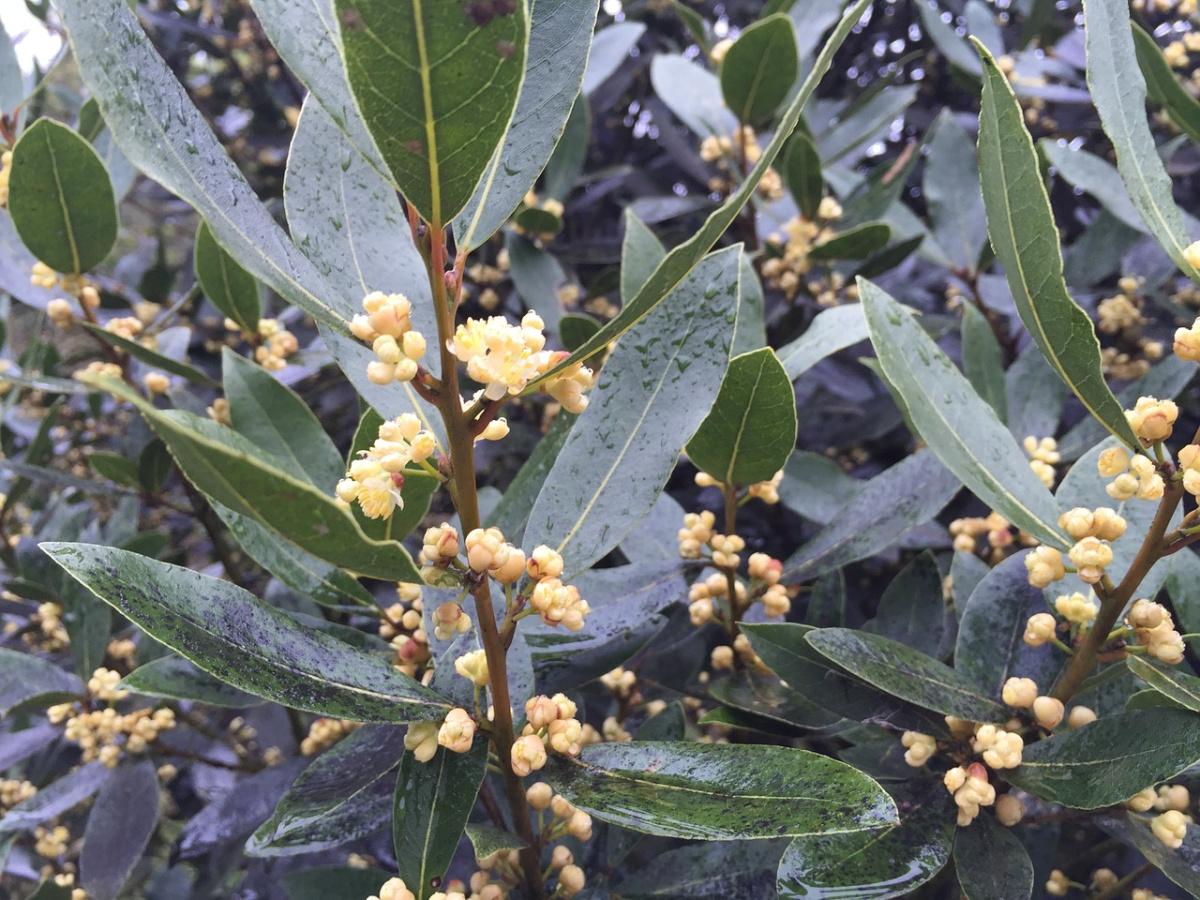
Bay Laurel (Laurus nobilis)
Most notably, Apollo’s most beloved sacred plant was bay laurel (Laurus nobilis), which we use today as a common kitchen spice for soups and stews. Apollo’s association with bay laurel began when he was struck by an arrow of Eros, the son of Aphrodite and the god of passion. As no god could break the spell of other gods, Apollo was bound to his attraction for Daphne, a beautiful nymph who, unfortunately for him, had no interest in her immortal pursuer. Wanting to preserve her purity, Daphne fled from Apollo’s attempts to satiate his love-struck grip and cried out to her father, a river god, for help. Upon hearing her request, her father transformed Daphne into a bay laurel tree. Apollo would reach her too late, as her legs became rooted into the ground and her arms solidified into branches. “O fairest of maidens, you are lost to me,” he mourned. “But at least you shall be my tree. With my leaves, my victors shall wreathe their brows. You shall have your part in all my triumphs. Apollo and his laurel shall be joined together wherever songs are sung and stories told” (Hamilton, 1942, p. 115).
Thus, the laurel tree, which in Greek is called dafni after the beautiful nymph, became sacred to Apollo, who declared that the tree would have eternal youth, never having its leaves turn brown or fall off. According to Pausanias, “they say that the most ancient temple of Apollo was made of laurel” (1918, 10.5.9). In both ancient Greece and Rome, bay laurel was used as a ceremonial herb, symbolizing victory, honor, and protection. The branches were woven into crowns for victors of war, winners of the Olympics, and at the Pythian Games, a festive competition among poets and musicians held in his honor.
The story of Apollo, with his long flowing hair and youthful vigor, and Daphne, with her tree-shaped body, can be seen depicted in countless works of art. While in her final response to his passionate pursuit, “her graceful nod gave answer to his love” (Hamilton, 1942, p. 115).
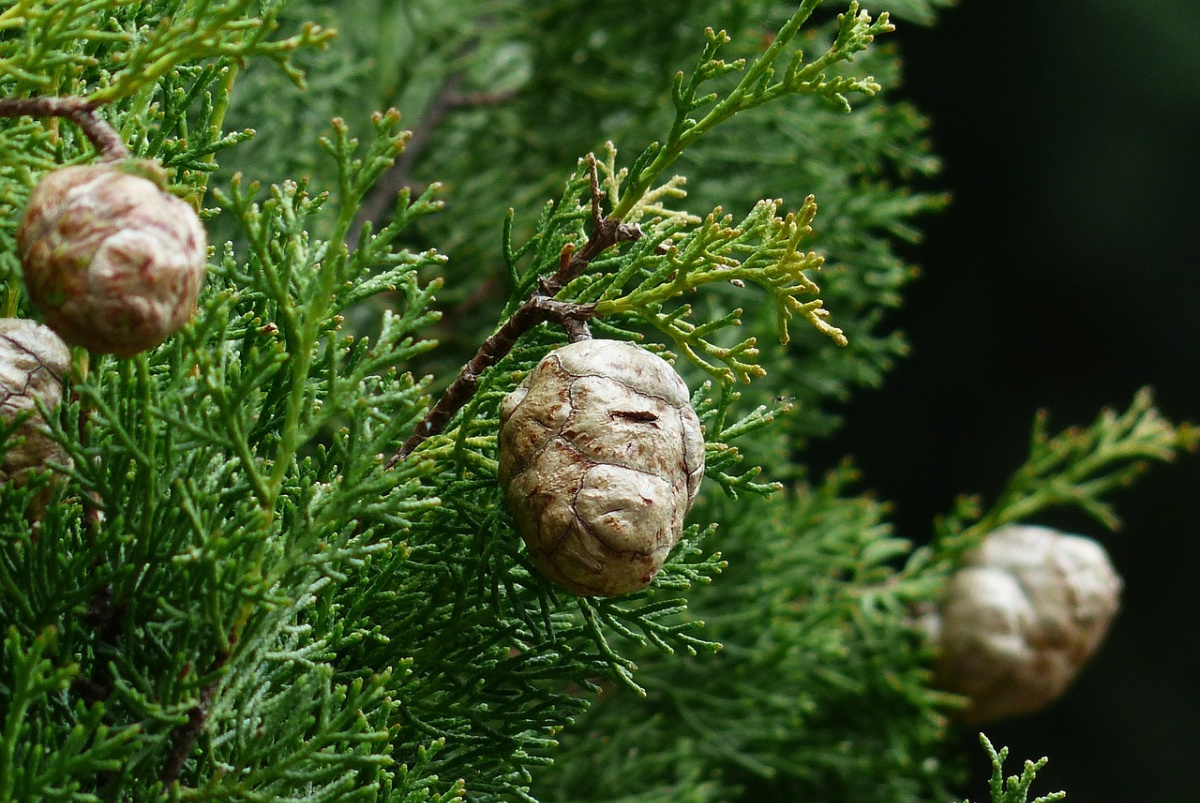
Cypress (Cupressus sempervirens)
Another well-known plant associated with Apollo is the cypress tree, a cone-shaped evergreen with needle-like leaves and small circular cones. Unlike in the Homeric Hymns, the ancient historian Strabo wrote that Apollo was born and raised in “a magnificent grove of all kinds of trees, of the cypress most of all” in Ortygia near the ancient city of Ephesos (Strabo, 1924, 14.1.20). Subsequently, temples were built there in his honor and a festival was celebrated every year.
The cypress tree also featured in the myth about a young prince named Kyparissos who was a beloved friend of Apollo. Kyparissos had “a giant stag, whose spreading antlers shed a screen of shade upon his head. Those antlers gleamed with gold and from his silky neck a collar hung over his shoulders, set with precious stones. Upon his brow, secured by slender strings, a silver medal swayed, given at his birth, and round his hollow temples, gleaming bright, from either ear a pearly pendant hung” (Ovid, 2009, 10.106). When the young prince accidentally killed his favorite pet stag, he became so distraught with grief “with endless sobs, with lifeblood drained away,” that he asked Apollo that he himself also die. Instead, the god transformed the prince into the tree: “his limbs began to take a greenish hue; his hair that curled down from his snowy brow rose in a crest, a crest of bristles, and as stiffness spread a graceful spire gazed at the starry sky” (Ovid, 2009, 10.106). Apollo then declared that “I shall mourn for you, for others you shall mourn; you [the cypress tree] shall attend when men with grief are torn” (Ovid, 2009, 10.106).
The cypress tree henceforth became a tree representing grief, mourning, and the pain of losing a beloved, and today is often found in cemeteries, providing the same resilience and emotional strength it did for mourners thousands of years ago.
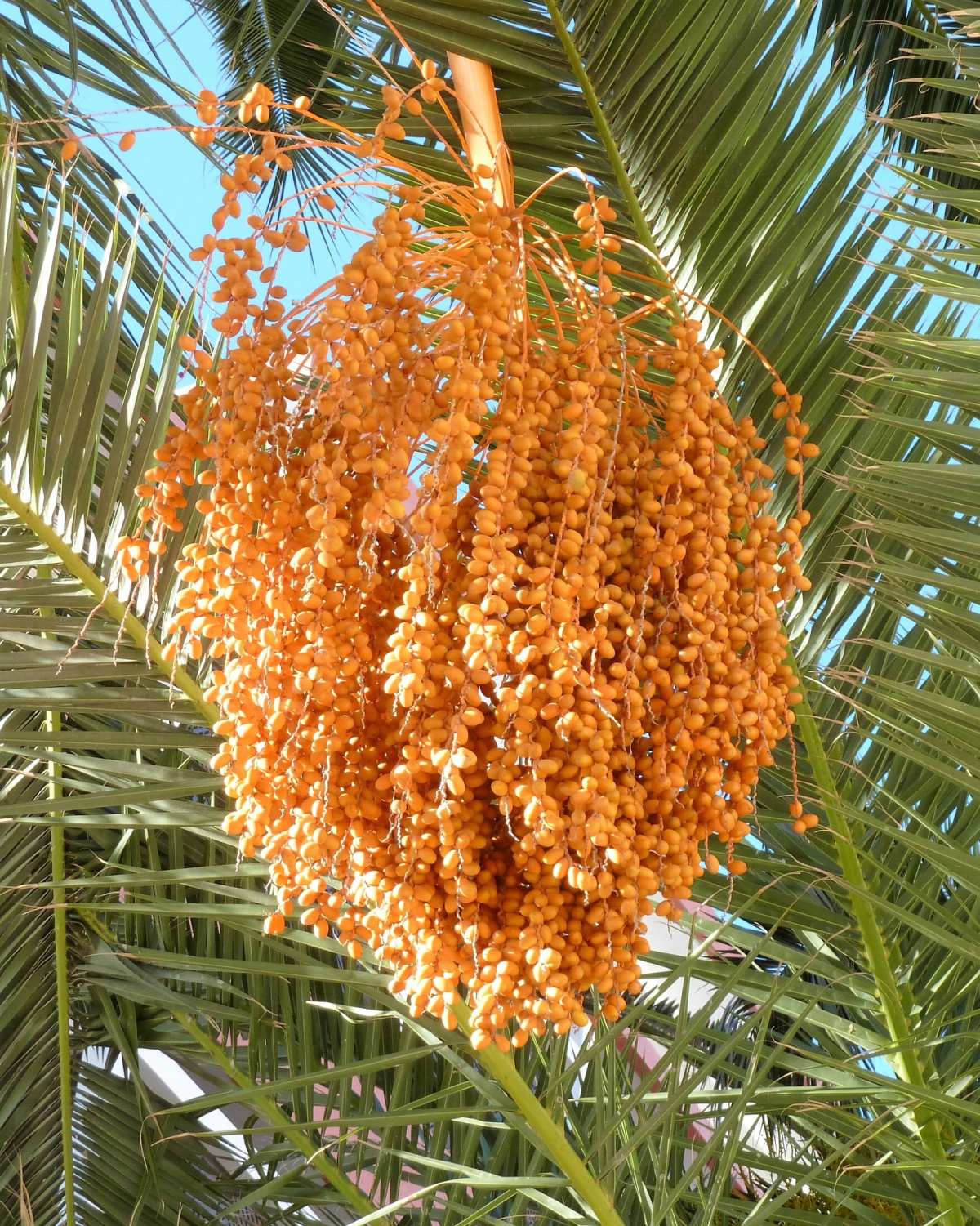
Date Palm (Phoenix dactylifera)
According to the Homeric Hymns, a collection of 33 anonymous ancient Greek hymns celebrating the Olympian gods and goddesses, Apollo was born on the island of Delos under a date palm, a medium-sized tree with delicious fruit popular throughout the Mediterranean region. Apollo’s mother, Leto, clung to the tree during the birth of her divine son. As a witness to his birth, the tree became sacred to the god, and the tree—perhaps the most famous tree in classical history—grew in the sanctuary dedicated to him on Delos (Popenoe, 1924).
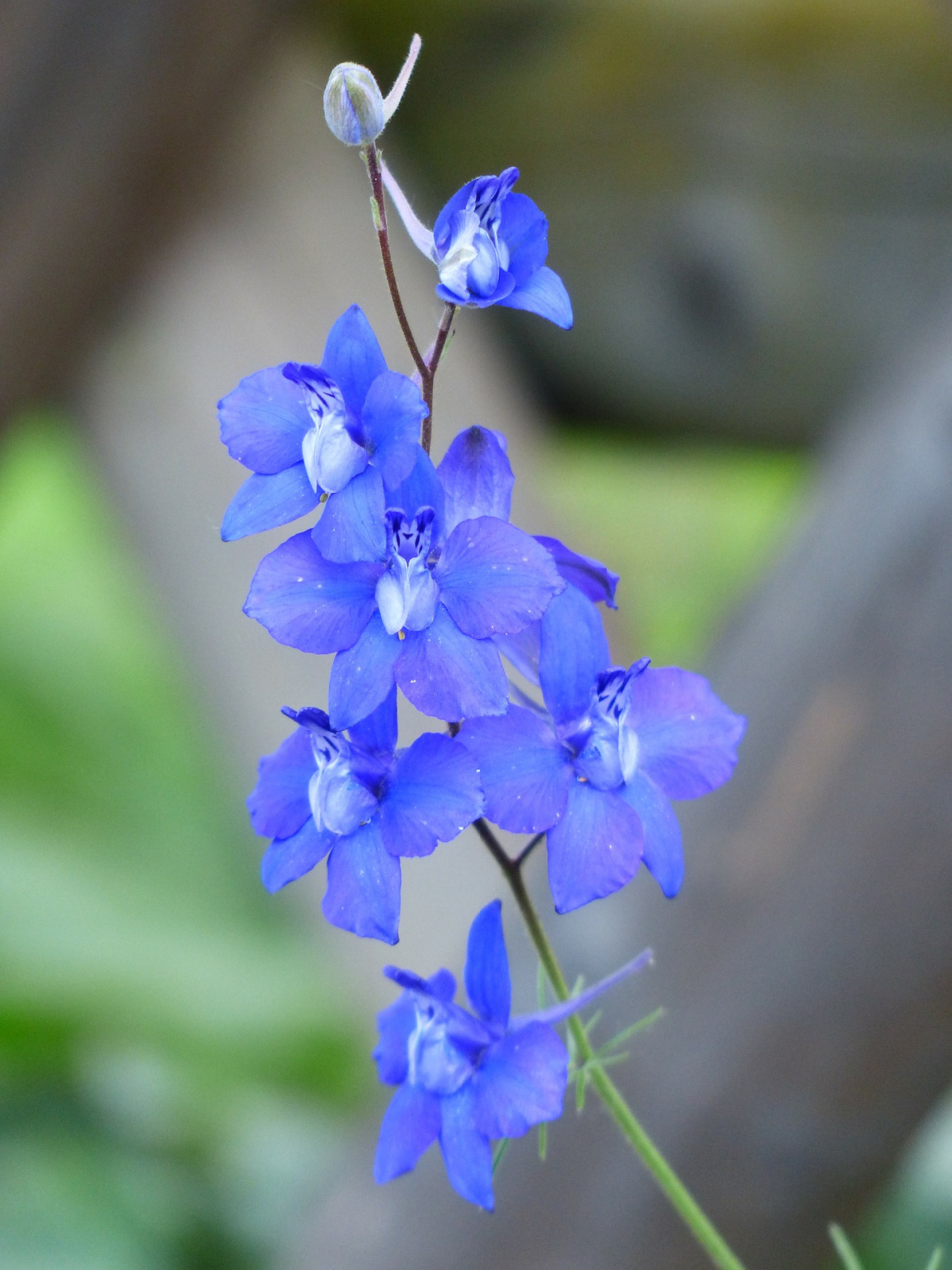
Rocket Larkspur (Delphinium ajacis)
Rocket larkspur is a flowering perennial with tall stems of blue flowers. In ancient Greece, the annual summer festival called hyakinthia was named in honor of the plant (while the name hyakinthos may sound like it refers to the hyacinth flower, the two plants are distinct). The festival was held in honor of Apollo near Sparta, a small city in the Peloponnese region of Greece.
The myth that connects Apollo with this plant involves a handsome, young Spartan prince named Hyakinthos who was loved by both Apollo and Zephyros, the ancient Greek god of the west wind. On one occasion, Zephyros grew jealous of Hyakinthos and Apollo’s friendship, and when they were playing quoits, a game involving throwing metal discs to land over or near a spike, he used his windy breath to strike Hyakinthos in the head with the disc. Apollo was grief-stricken with the deadly blow to his friend’s head and in his grief, made the larkspur flower spring forth from his friend’s blood, thus honoring his memory in the beauty of the plant (Ovid, 2009).
Sacred Sanctuaries of Apollo
“…Phoebus Apollo, bearer of the golden blade, speaks in answer from his laurel tree…”
– Homeric Hymn to Apollo (7th c. BCE, 3.395)
Plants associated with the Greek gods and goddesses were often incorporated into rituals and ceremonies honoring the divine powers of their Greek mythological world. Apollo’s most famous sanctuary of the ancient world was the great Oracle of Delphi on the mainland of Greece. Other well-known sanctuaries of Apollo were located on the Greek islands of Delos and Rhodes; on mainland Greece at Thebes, and in modern-day Turkey at Didyma and Hierapolis.
Regarding the Oracle of Delphi, a site that remains of cultural importance, the ancient Greeks made pilgrimages to honor the god and receive his famed oracle to answer their most pressing questions for matters in health, money, love, and relationships. Many scholars have suggested that bay laurel leaves were used by the temple priestesses, called Pythia, to connect with the god and receive his prophecies. Chewing and burning the leaves for incense were mentioned by ancient poets and playwrights, as well as by Plutarch, a Greek philosopher who temporarily served as a priest in the temple. The leaves were also found illustrated on surviving pottery depicting sacred rituals (Harissis, 2014). Laurel branches were carried in processions, worn as garlands, and were also used for practical purposes, such as to sweep the floors of holy places. In addition to plant use, music and dancing were also incorporated in rituals to celebrate the bounty of the god’s blessings and appeal to his merciful nature as the shining god of healing.
In Closing,
The stories of Apollo, the popular Greek god celebrated throughout the ancient Greek empire, continue to be captured in the plants that he deemed sacred. The mythological gods of the ancient Greeks were more than fairy tales and fantastical stories. They were truths held tightly by the ancient Greeks who both feared and revered the powers of nature. With his flowing hair and musical lyre, Apollo brought merriment and lightness to ancient celebrations. And with his powers to strike his heavy arrows to beset harm, he was respected and feared. Apollo’s duality represents the very essence of nature herself, a reminder that we can feel both pleasure and pain from the world around us and that from grief grows true beauty, as is witnessed by his healing touch.
For more on herbal myths and legends, see:
Herbal Myths, Lore, and Legends: Lady’s Mantle, Mint, Fennel, Mandrake, Elder, Thistle, and Belladonna
The History, Mythology, and Offerings of Hawthorn
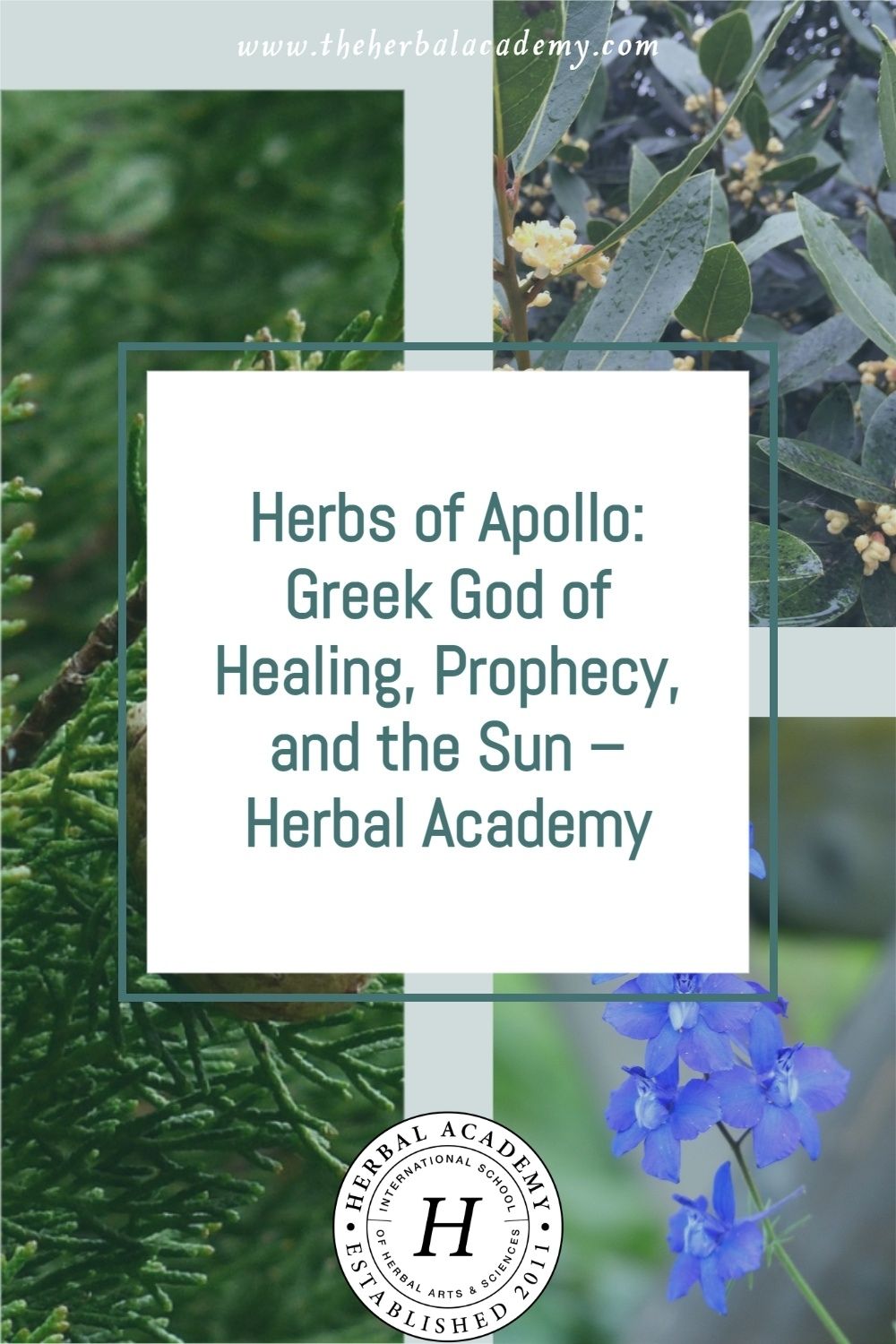
REFERENCES
Aeschylus. (1926). Eumenides. (H. W. Smyth, Trans.). Cambridge, MA: Harvard University Press.
Apollodorus. (1921). The library. (J. G. Frazer, Trans.). Loeb Classical Library (Vol. 121 & 122). Cambridge, MA: Harvard University Press. (Original work published c. 180 BCE).
Hamilton, E. (1942). Mythology: Timeless tales of gods and heroes. New York, NY: The New American Library.
Harissis, H. (2014). A bittersweet story: The true nature of the laurel of the Oracle of Delphi. Perspectives in Biological Medicine, 57(3), 351-60. https://doi.org/10.1353/pbm.2014.0032
Hesiod. (1914). Homeric hymns, epic cycle, homerica. (H.G. Evelyn-White, Trans.). Loeb Classical Library (Vol. 57). Cambridge, MA: Harvard University Press. (Original work published c. 7th century BCE).
Homer. (1898). The iliad (S. Butler, Trans.). London: Longmans, Green and Co. (Original work published ca. 762 BCE).
Ovid. (2009). Metamorphoses. (A.D. Melville, Trans.) Oxford, UK: Oxford University Press. (Original work published c. 8 BCE).
Pausanias. (1918). Description of Greece. (W. H. S. Jones, and H. A. Omerod, Trans. ). Loeb Classical Library Volumes. Cambridge, MA: Harvard University Press.
Popenoe, P. (1924). The Date-Palm in Antiquity. The Scientific Monthly, 19(3), 313-325. http://www.jstor.org/stable/7328
Plutarch. (1874). Moralia. (W. W. Goodwin, Trans.). Boston: Little, Brown, and Company. (Original work published c. 100 CE).
Smith, W. (ed.) (1849). Dictionary of Greek and Roman biography and mythology. Boston: Little Brown & Company.
Strabo. (1924). The geography of Strabo. (H. L. Jones, Trans.). Cambridge, MA: Harvard University Press. (Original work published c. 7 BCE).







